After a bit of browsing on eBay I found several “new” versions of my favourite classic op amp, the 741. We’ve already seen about twelve different layouts so far, but today we’ll see that there are still more out there.
Starting with the oldest, we go back more than four decades to 1974. Texas Instruments at that point sold the SN72741, adapting the original Fairchild part number to their own nomenclature: SN stands for “Semiconductor Network”, meaning “integrated circuit”, while the numbers indicate the product series and temperature range (0 to 70 °C in this case; there was also an SN52741 with a wider temperature range).
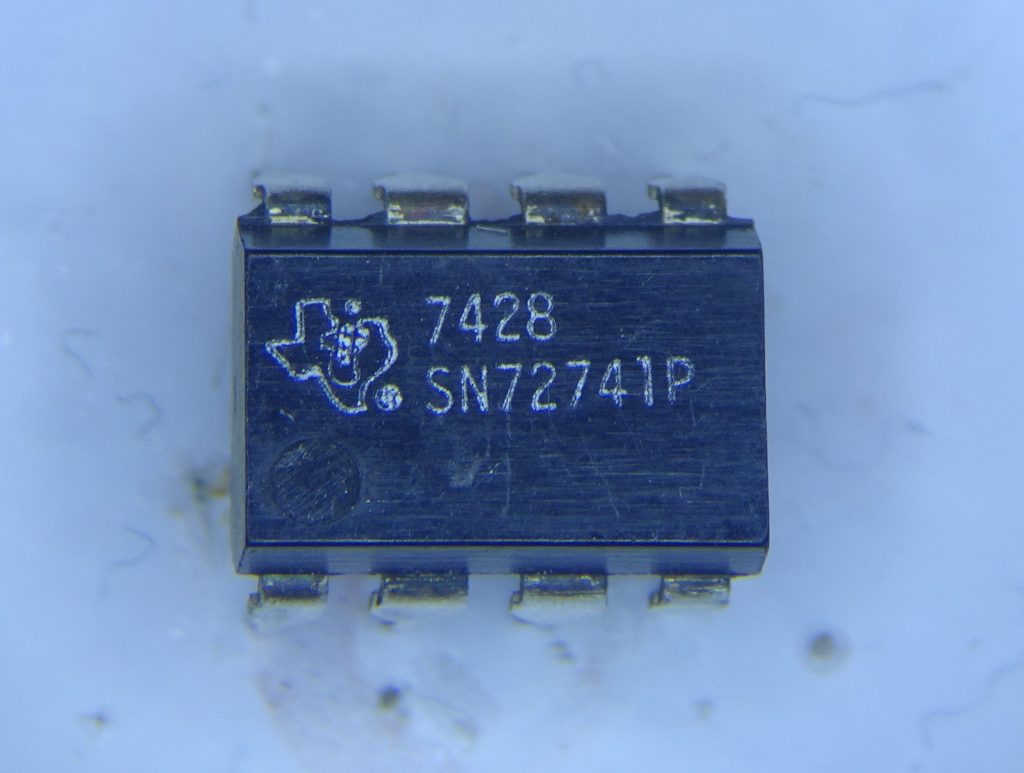
The package is typical for the 1970s with rather crude white lettering. It’s also about 25% thicker than most DIP-8 packages.
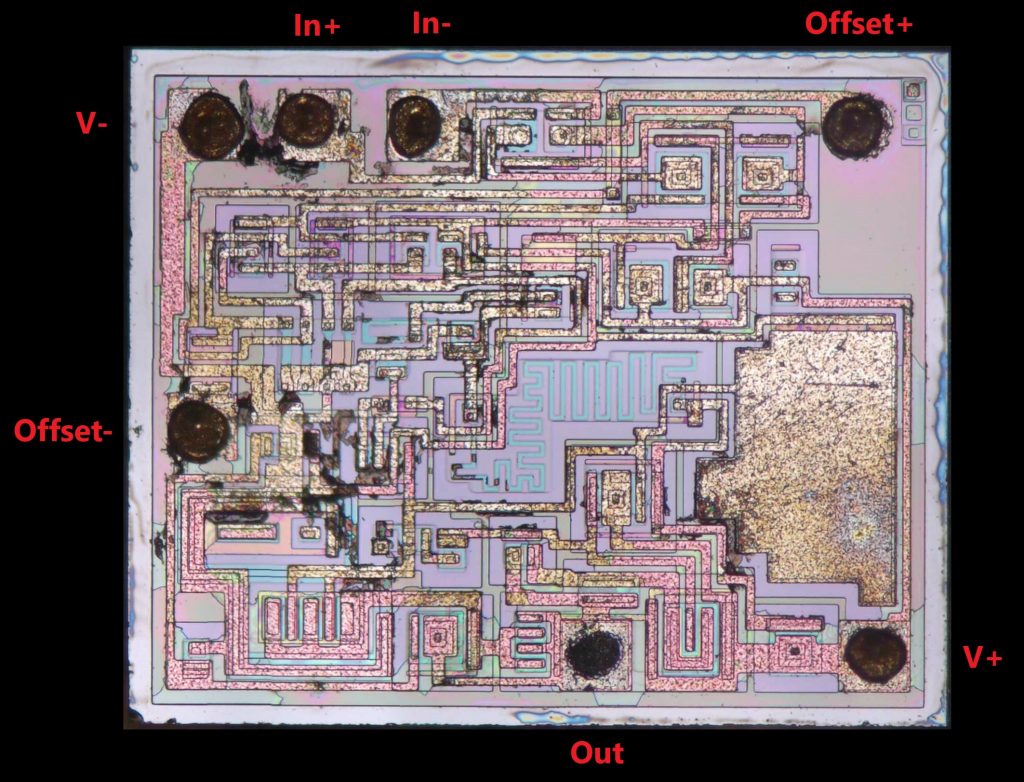
Inside it’s very typical of a chip of that era. The wiring is at 90 degree angles with no rounded shapes. The layout doesn’t seem very efficient, with a huge empty area below the pad at the top right. There are no die markings to indicate the manufacturer or the part number.
Another classic part, this time from 1982, is the CA741 from RCA:
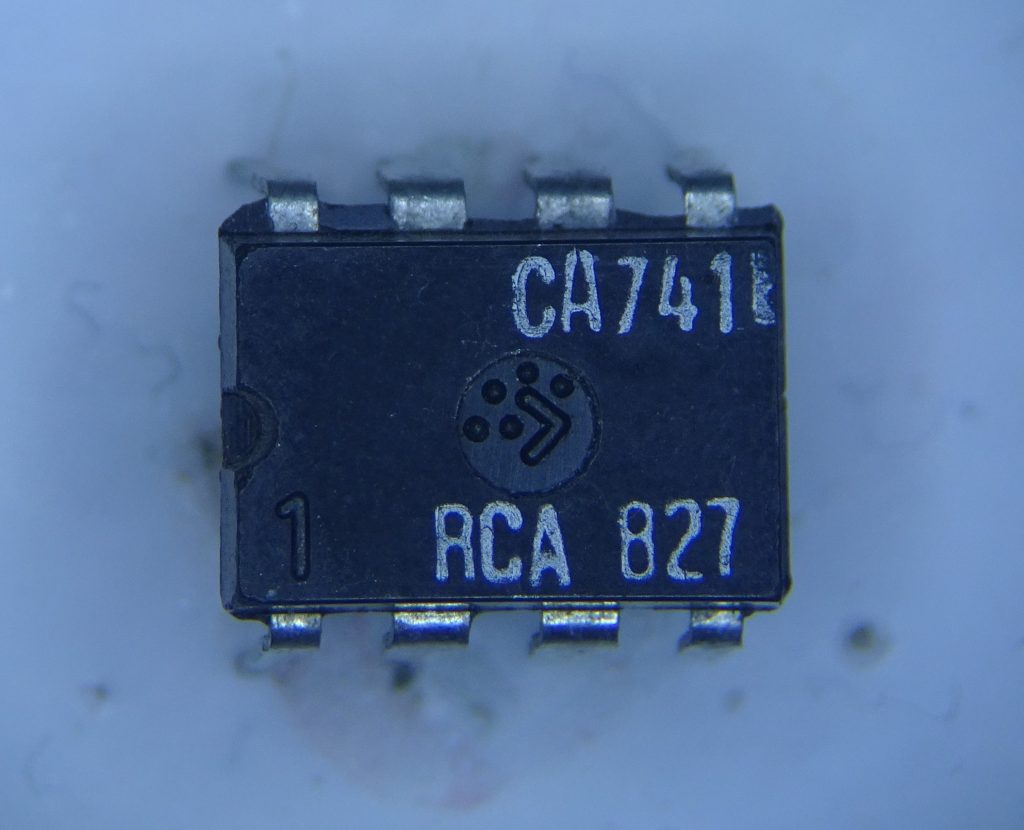
This package is again a bit unusual, with the (very helpful) pin 1 indicator moulded into the body. I’m not sure what’s the meaning of those symbols in the centre though (the five dots plus a “>” sign).
I also found the same device in a metal can package, called “CA741CT”. There’s no clear date code on it, although “623” is likely a production code of some kind. Also interesting is the text “EQZJ 606/” that’s stamped into the surface, rather than printed on it like the part number. Perhaps this is a production code from factory that made the metal cans, rather than the facility that mounts the chip inside it.
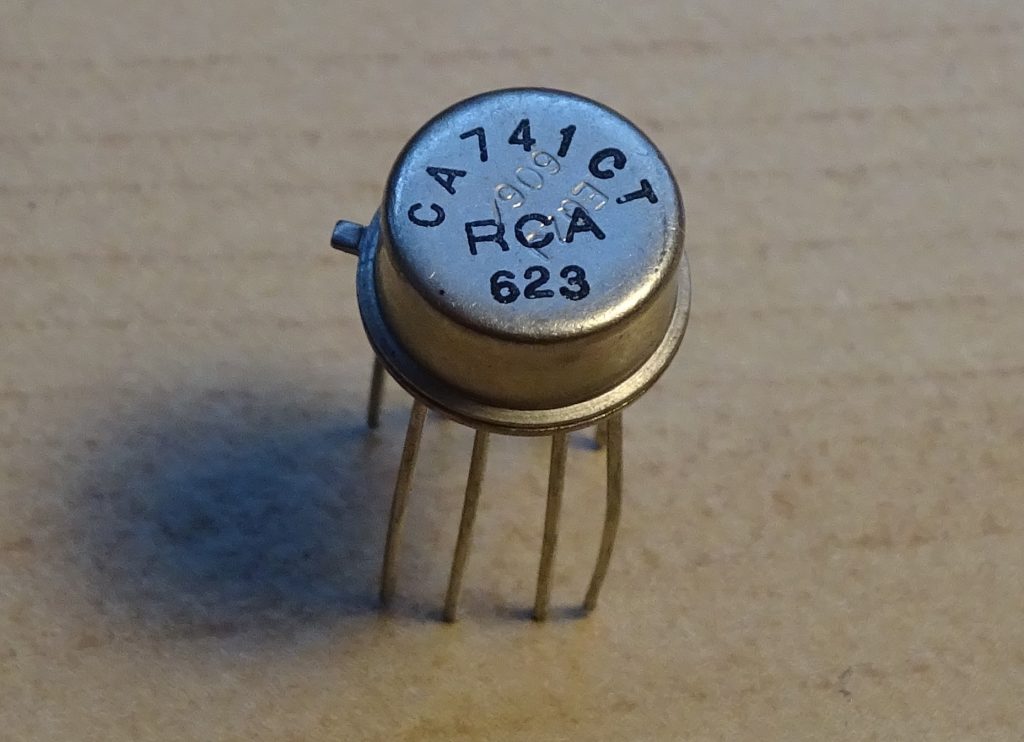
Founded in 1919, Radio Corporation of America quickly grew into a very large manufacturer of radios, televisions and electronic components. Increased competition in the 1970’s made life difficult, and RCA attempted to diversify into various markets but failed to become profitable. It was acquired by General Electric in 1986 and many of its businesses were sold off, the semiconductor business going to Harris (which became Intersil and finally Renesas). The RCA trademark lives on today as a consumer electronics brand, whose owners have little to do with the original company. Several ICs that were originally designed at RCA are still being sold today by various manufacturers, recognizable by their part numbers starting with “CA”.
Both the plastic and metal package variant of the CA741 contain the same chip:
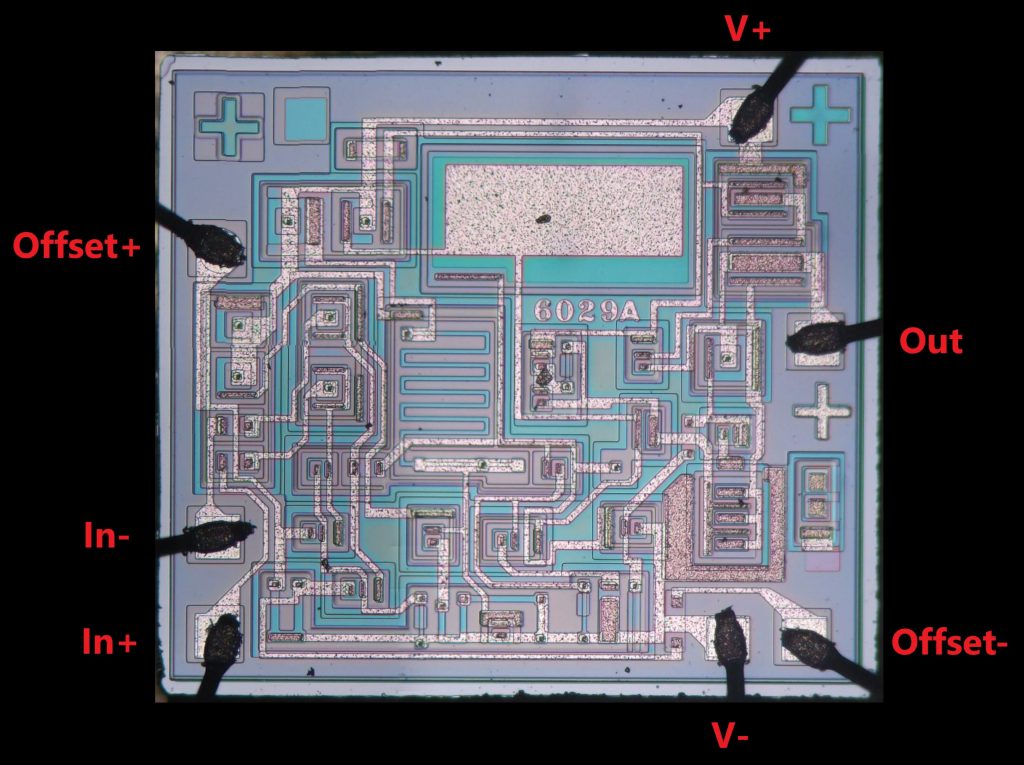
The internal part number (6029A) is written in rather curvy letters; you usually see very simple, angular letters and numbers on a chip surface, especially in old designs such as this. Also interesting are the very large “+” shaped alignment markers. Again there is quite a lot of unused space.
Next is the UA741, made by Thomson in 1984.
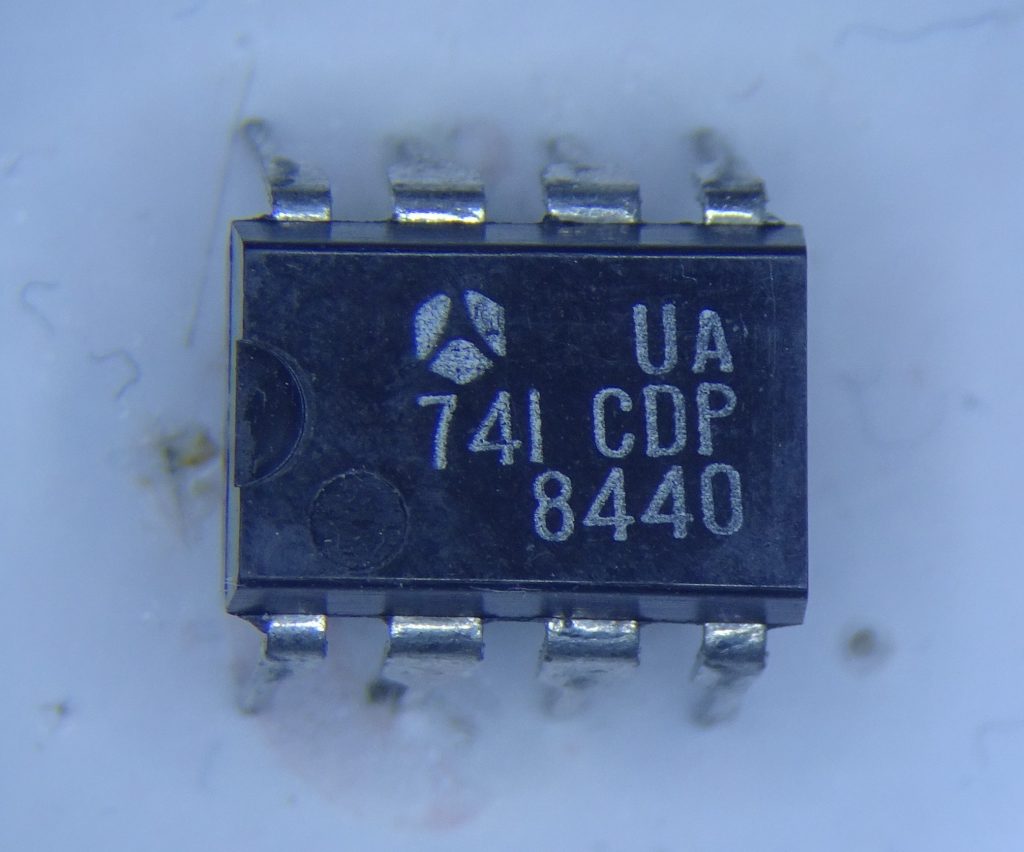
Thomson was a French electronics manufacturer, one of the two that eventually formed STMicroelectronics. The chip inside this package doesn’t look very similar to the ST chips that we’ve looked at before though:
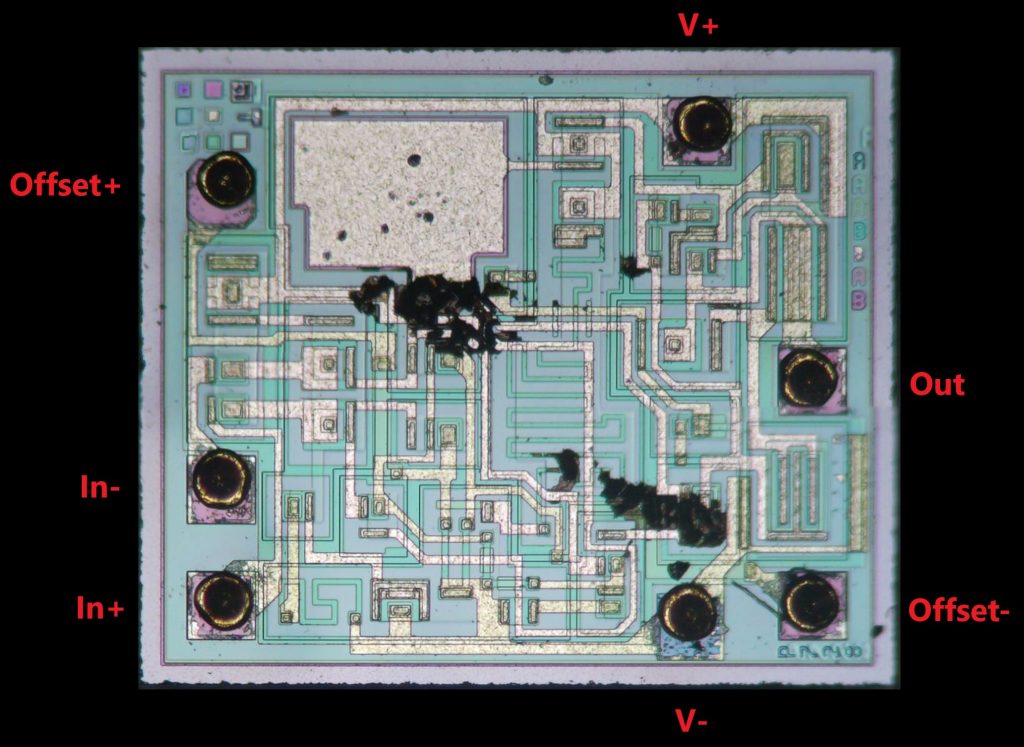
The revision markers on the right edge (As and Bs) do look similar to the ones we saw at the ST chips. However, the circuits are much more square and angular, and the various components are placed differently. There is a part number “P728” at the bottom-right corner and a variety of test shapes at the top-left.
The last chip for today is the LM741, by Fairchild Semiconductor:
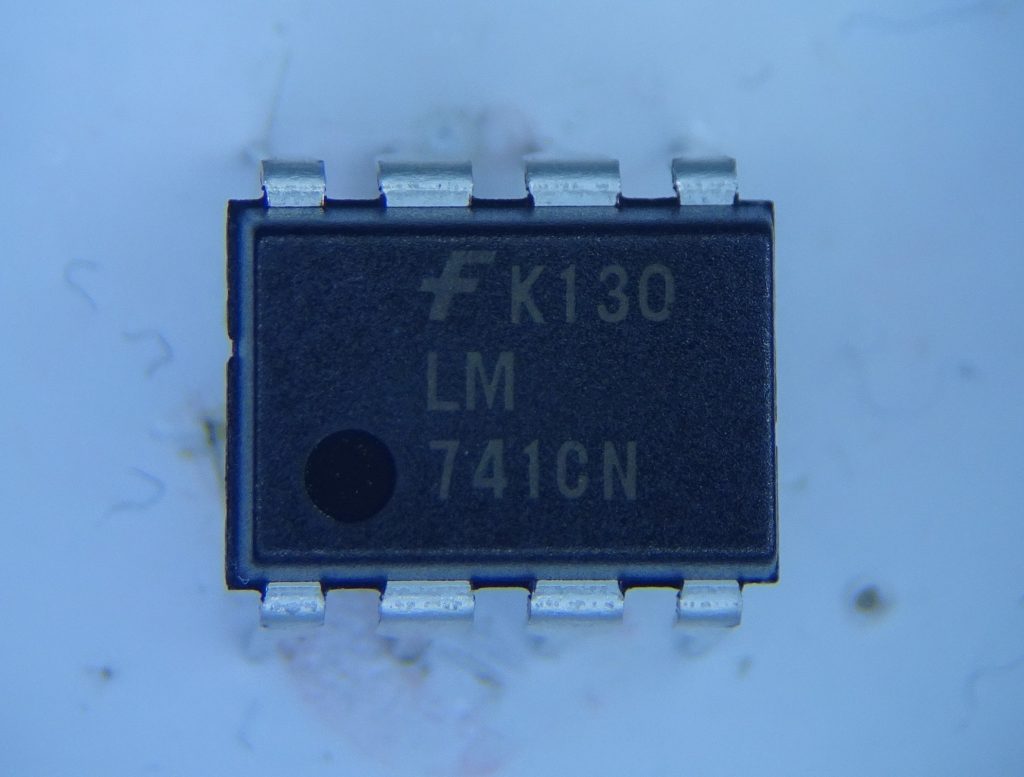
The “K130” is likely a production code, but it’s not immediately clear when this chip was made. However, since it looks very new (with laser-etched markings) it is most likely from Fairchild’s second stint as an independent company, from 1997 to 2016. The “LM” part number also points to this: “Linear Monolithic” was the analog product line of National Semiconductor, which owned Fairchild from 1987 to 1997. The 741 was originally designed at Fairchild back in 1968, but it was marketed as “µA741” at the time.
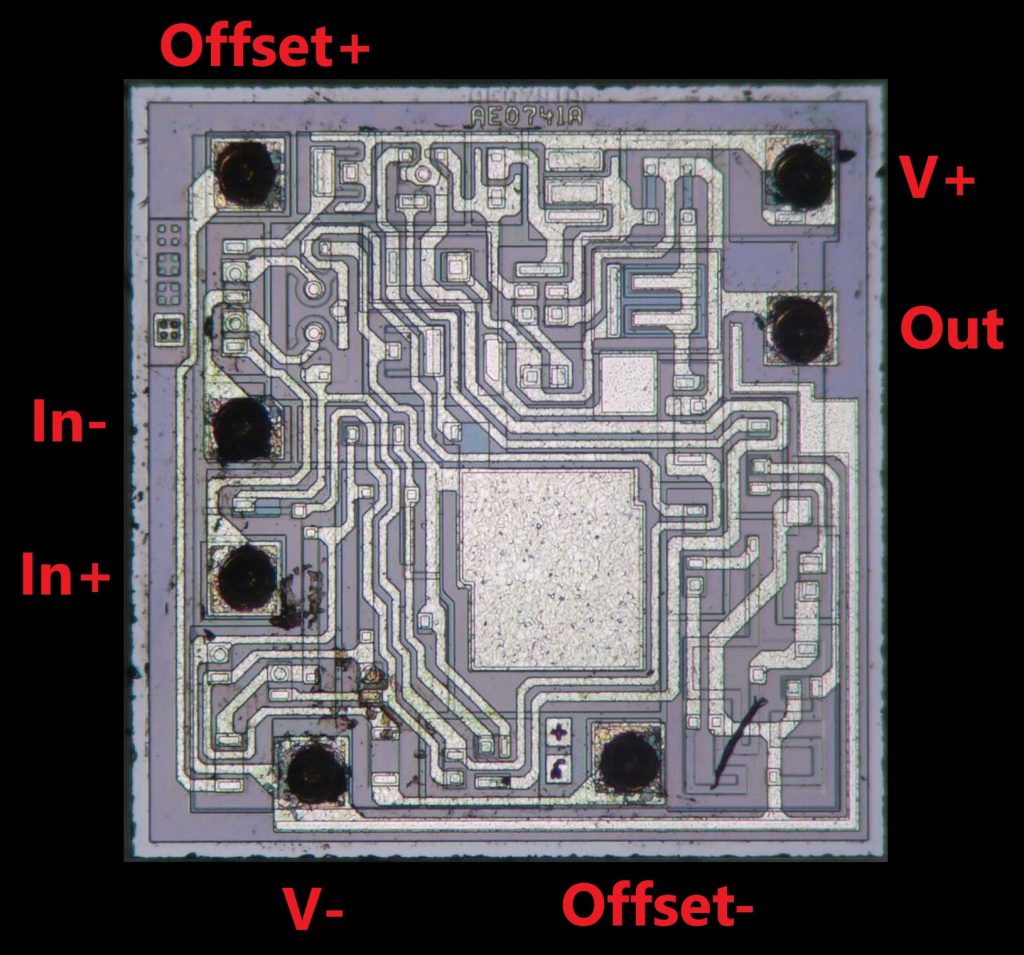
Inside, the chip is in any case different from National’s LM741. I’m wondering if it would have any relation to National’s chip at all; when Fairchild was spun off in 1997, it consisted of National’s logic and discrete components business. Although Fairchild eventually became one of the major suppliers of analog circuits, it had no analog products at first, so I suspect these were all developed from scratch in the early years.
It does make you wonder what happened to the original uA741 design though; the original Fairchild company produced it from 1968 until 1987, when it was acquired by National. Their new owners already had their own LM741, so did they just discontinue the Fairchild part? Did they sell it alongside their own, like TI does nowadays? Did they incorporate Fairchild’s design into their LM part? My guess is that it was simply discontinued, which would make for a rather undignified end for the op amp that started it all.
The circuit on this die looks reasonably modern with its round emitters and curvy wiring. The layout does look kind of odd with long loops and and some strange resistor shapes. There are two small alignment markers next to the Offset- pin; one shaped like a “+” and one that’s more similar to a “y” shape. On the left edge are some more plus-shaped markers.

As usual great job! How did you remove the epoxy so accurately?
Thanks Artem! I use chemical etching to eat away the epoxy. This usually works very well, but especially on older packages there are sometimes pieces of plastic that remain stuck to the die (as you can see on the TI and Thomson parts here).
Good job! I could never achive the quality like yours. I’ve used fuming nitric acid
Do you know if they ever produced a 14 pin variant in the early 70s.
I have two MIL chips both 14 pin.
ML741m and ML748m.
Yes, I know at least TI, National and Signetics (and probably others) also made 14-pin DIP versions of the 741. They just have six additional no-connect pins, so I’m not sure what the exact purpose was. Maybe additional mechanical stability for aerospace applications?
I have some marked:
CUE
UA741
3994
Any idea who made these? 39th week, 1994?